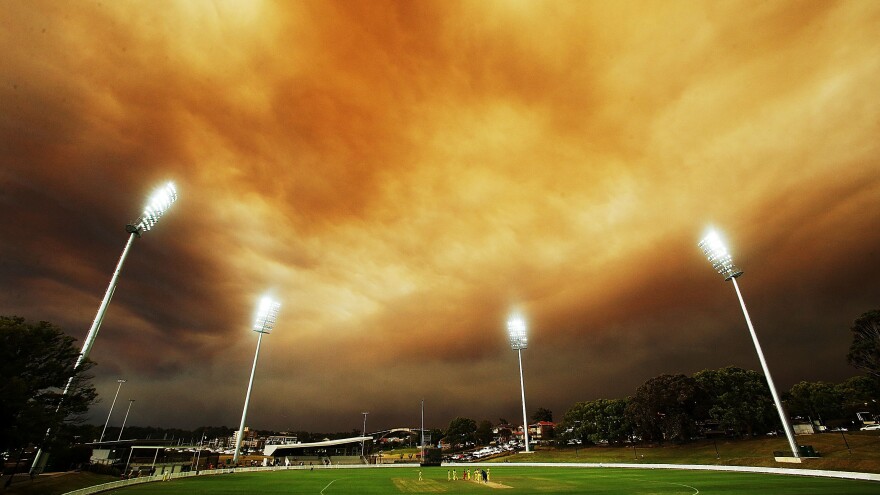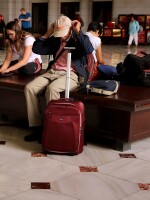Wildfires are burning to the north, south and west of Sydney, Australia, and smoke "has been rolling in for days," correspondent Stuart Cohen said Tuesday onMorning Edition.
While the fires are mostly in sparsely populated areas, Sydney is blanketed — "you can smell smoke inside buildings" and health authorities are expecting a surge in cases of people with respiratory problems, Cohen added.
Things may get worse.
The top headline today on the website of The Sydney Morning Herald quotes Rural Fire Service Commissioner Shane Fitzsimmons saying that Wednesday (already underway in Australia) "will be as bad as it gets."
The weather in New South Wales state, which surrounds Sydney, is going to be "hotter, drier and windier than the dire predictions previously forecast," the Morning Herald writes.
"On days like [this]," Fitzsimmons says, "there's a very real potential for more loss of homes and life." So far, only one death has been linked to the fires — that of a man who died of a suspected heart attack while battling a blaze that threatened his home.
Looking ahead, correspondent Cohen notes that Australia "usually has its peak fire season in the middle of summer — December and January. ... The big worry now is that it's only October [and] there are still months and months ahead of the typical fire season."
The causes of the several dozen fires have varied. There have been lightning strikes and other natural fire starters. There have also been some cases of suspected arson.
Australian Broadcasting writes that "an 11-year-old boy appeared in court on Tuesday accused of setting fire to an abandoned mattress and lighting a grass fire in Newcastle, north of Sydney, last week. A 15-year-old boy will face court next month over the same fire. Police say the fire caused about 5,000 hectares of damage." According to the Metric Views blog, a typical Major League Baseball field is about one hectare. A typical cricket ground (see the photo we've attached to this post) is about 1.25 hectares.
Australian Broadcasting is live blogging here.
Copyright 2020 NPR. To see more, visit https://www.npr.org.



